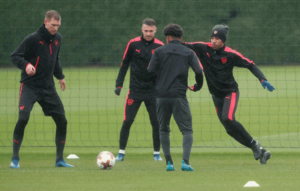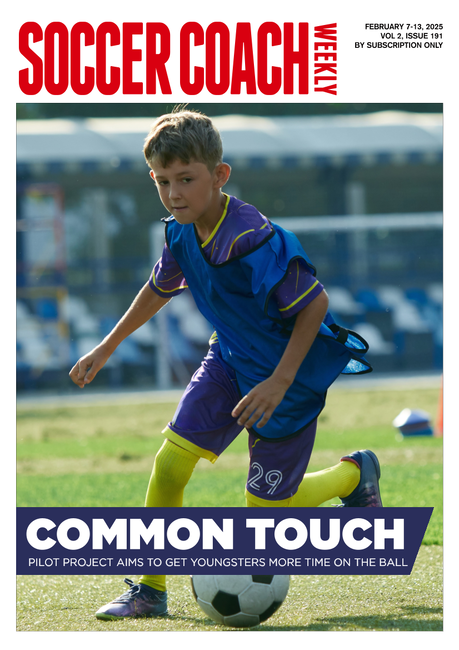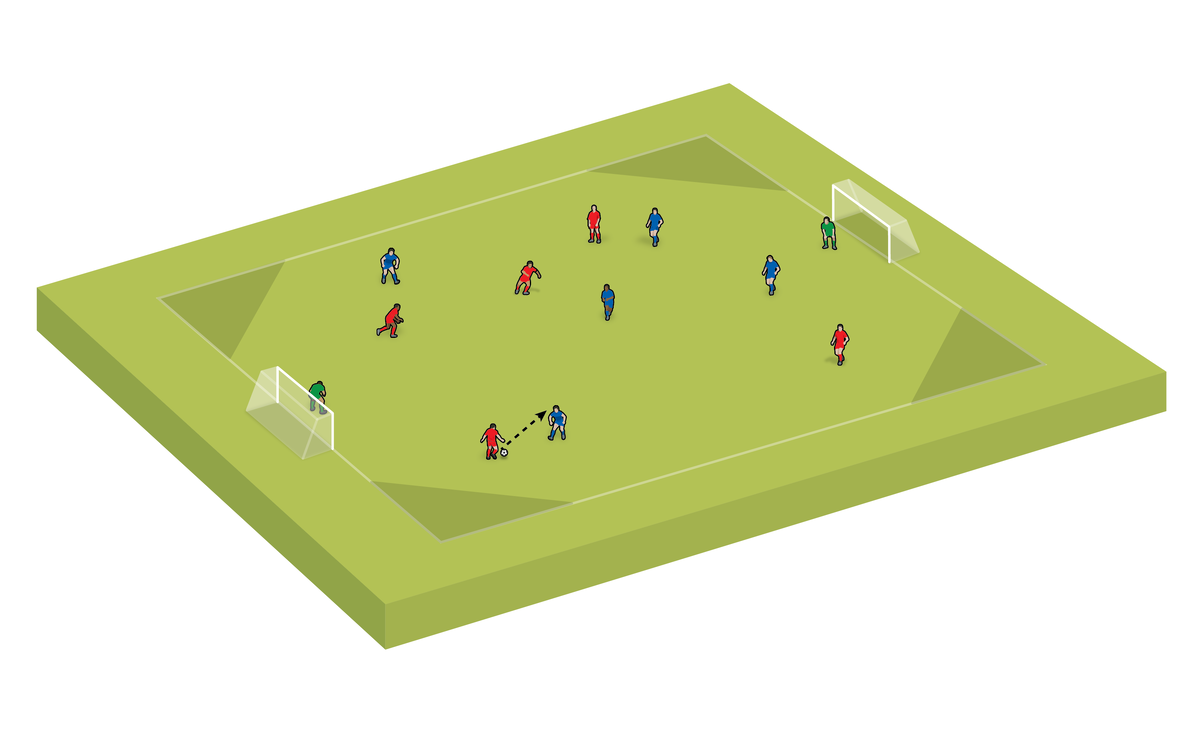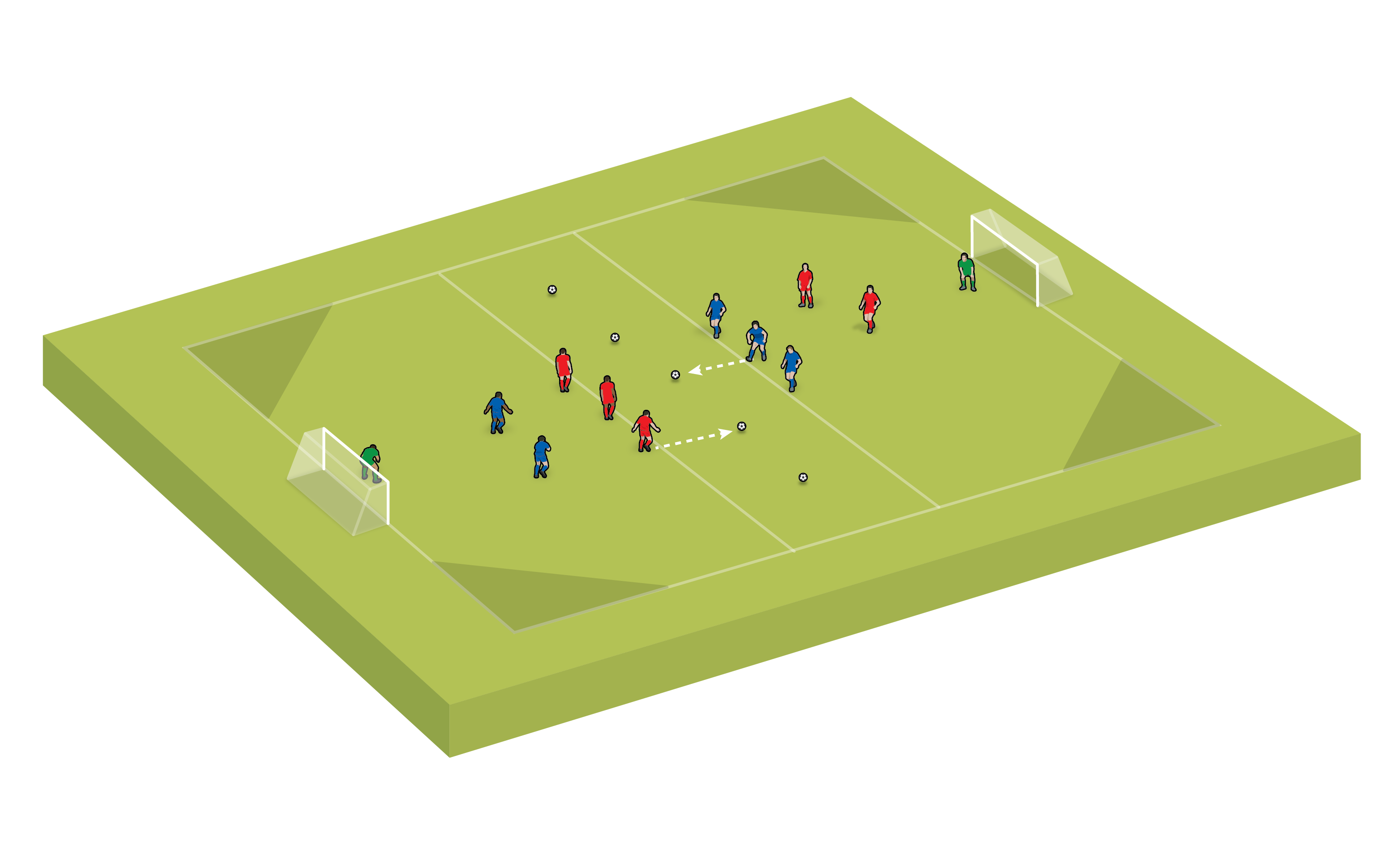Pre-season | Week 2: Developing skills
The second training session is, in theory, where the hard work really begins. So having eased yourself and your players back into the swing of things, now is really the time to extend thinking, develop ideas and deliver a programme that will see your team flourish.
The first pre-season training session back after the summer break gives everyone the chance to link up, brush off the cobwebs and get back to soccer. But the second training session is, in theory, where the hard work really begins.
So having eased yourself and your players back into the swing of things, now is really the time to extend thinking, develop ideas and deliver a programme that will see your team flourish. And it’s important to remember that pre-season is as much about you, the coach, as it is your players. If you’re not mentally prepared for the campaign that lies ahead, you can’t expect your players to be either.
Timeline
0mins: Refresh from last week 3mins: Light jogging 6mins: Static stretches 9mins: Light jogging 12mins: Dynamic stretches 15mins: Possession play 35mins: Sprint drills 45mins: Quick practices 55mins: Mental development 65mins: Small-sided game 85mins: Warm down and closing chat
Refresh
In the first session back, the emphasis was on building up stamina and getting a feel of the ball. It’s important to continue this premise by warming up well, with jogging and stretching moves interspersed.
Fitness first
By session two fitness levels should be on the rise again, so don’t be afraid to add in a few sprinting and speed drills. Make them competitive by using races and relays with distances of between 10-30 yards. Remember to monitor fatigue, allowing sufficient recovery time, but use this rest period to your advantage by firing across extra motivational messages.
Fast footwork fitness test
Five Minute AskSCW: How can you train speed in your players?
Possession play
Possession football is a massive physiological conditioning tool, and is great for brushing up on technique.
one ball and construct a game situation where one side has a strong overload – for instance a 7v4 in a 15x15-yard area.
Play for two minutes, seeing if the team with fewer players can dispossess their opponents. Enlarging the playing area will alter the relative difficulty level for the chasers, while for the passing team the principles of ‘pass and move’ rehearsed in the first pre-season session should be practised here. This game is great for conditioning without players actually realising how hard they are working.
Keep changing the team numbers – be extravagant and go for an 8v3, or even a 9v2. And remind players to use all parts of their bodies as well as both sides of each foot in order to control the ball. They should use the side of the foot for accuracy and the instep for power, bending the ball with the insides and outsides.
Try these two drills for great ways to play possession football:
Possession and movement
Possession under pressure
Quick practices
Now move on to individual attacking and defending practices. These should be simple quick sessions that remind players of their responsibilities in the key areas of the pitch (work on more detailed practices will come in future weeks). These two sessions are ones I prefer to use:
Defending 1v1 in midfield
1v1 / 2v1 Game
Mental development
Towards the end of the second session you want to develop things, moving from ‘specific phases’ of play (players following individual and team actions) to ‘open phases’. This is where tactical thinking is extended. So after players have perfected passing, possession or dribbling skills, recommend they take a shot or lay a precise through-pass to a team mate. Try some simple pass and move drills that make your players think about where and when to run and to work on passing and shooting technique.
Five minute tactics: pass and move
Quick interplay to goal
Small-sided game
And remember to always finish the session with a small-sided game, asking players to showcase the techniques they’ve learned in the drills. Great games to use are ones that involve all players and they have to use the techniques worked on in the training session beforehand. These two are brilliant for that.
Steal the ball
4 v 4 - Ice Hockey Style
PRE-SEASON TRAINING ESSENTIALS
No.3: Holding your nerve Sports science experts agree that jump-starting the central nervous system quickly in training is essential. Doing this means getting players primed and ready for intense soccer training. You can achieve this by setting up ladder drills and mini-hurdles to promote mental agility which can be transferred into physical agility as the season progresses.
Pre-season pros?
Many coaches like to slide in a friendly match or two before the season starts, but here’s evidence enough that you shouldn’t take results too seriously... Wolves manager Mick McCarthy certainly doesn’t! “I hate pre-season. I hate pre-season games. I hate everything about it and that game [a 2-1 defeat to Crewe Alexandra a fortnight ago] has just proved it. “It’s just a matter of getting fit for August 13, because these results will have no bearing on what goes on during the season.”
Coaches Testimonials

Gerald Kearney, Downtown Las Vegas Soccer Club

Paul Butler, Florida, USA

Rick Shields, Springboro, USA

Tony Green, Pierrefonds Titans, Quebec, Canada
Pre-Season Training
Discover the simple way to become a more effective, more successful soccer coach
In a recent survey 89% of subscribers said Soccer Coach Weekly makes them more confident, 91% said Soccer Coach Weekly makes them a more effective coach and 93% said Soccer Coach Weekly makes them more inspired.
*includes 3 coaching manuals
Get Weekly Inspiration
All the latest techniques and approaches
Soccer Coach Weekly offers proven and easy to use soccer drills, coaching sessions, practice plans, small-sided games, warm-ups, training tips and advice.
We've been at the cutting edge of soccer coaching since we launched in 2007, creating resources for the grassroots youth coach, following best practice from around the world and insights from the professional game.







